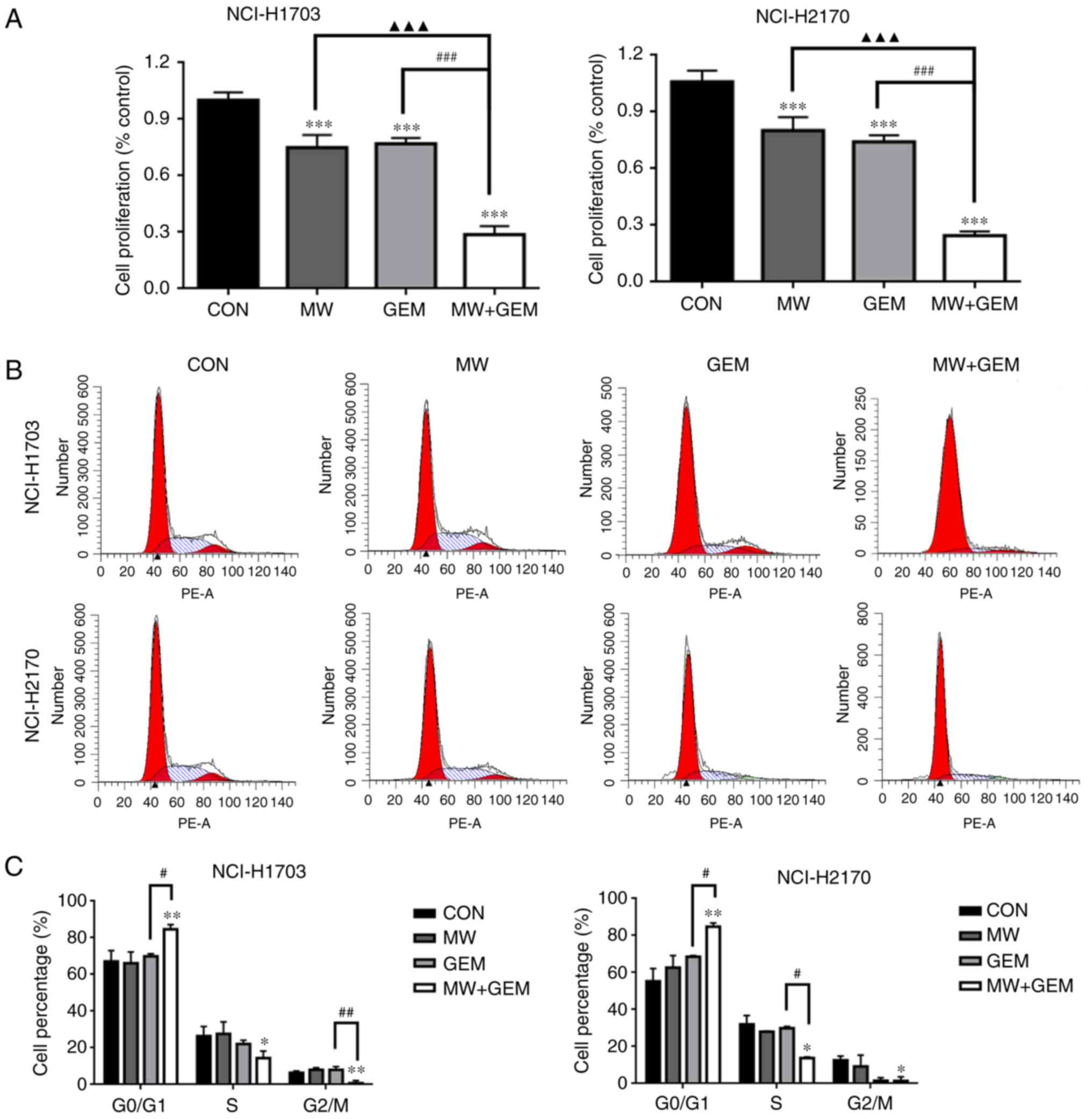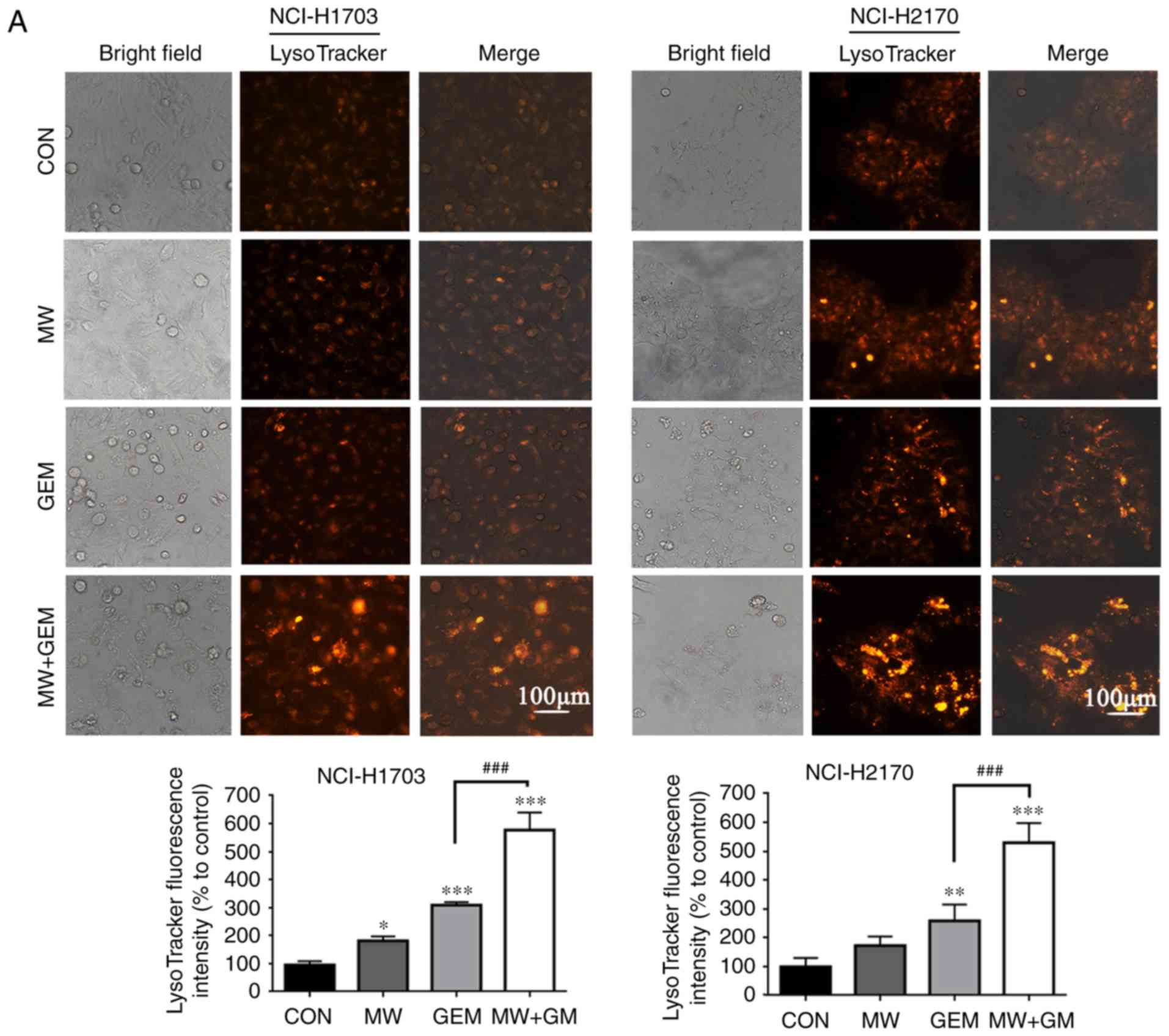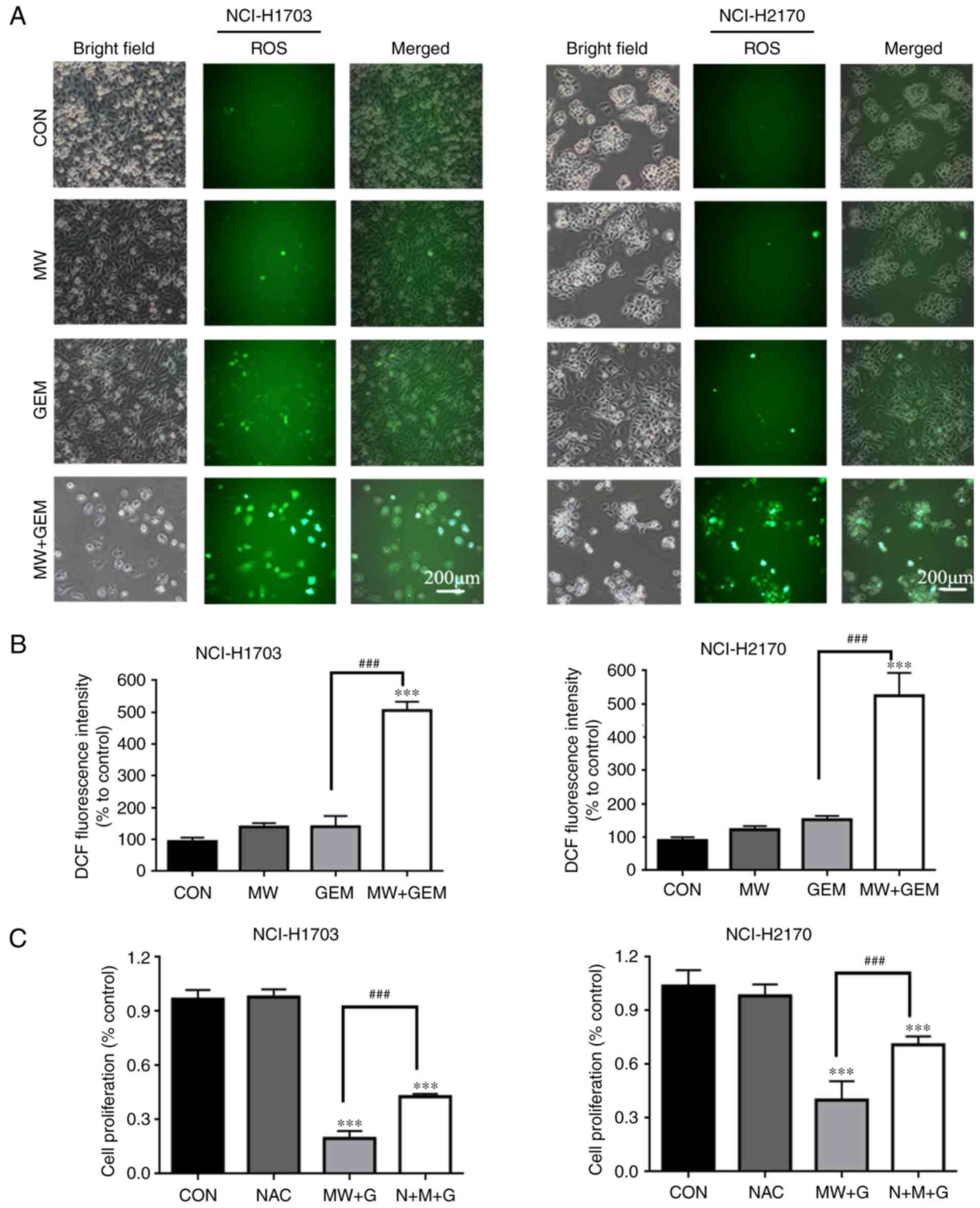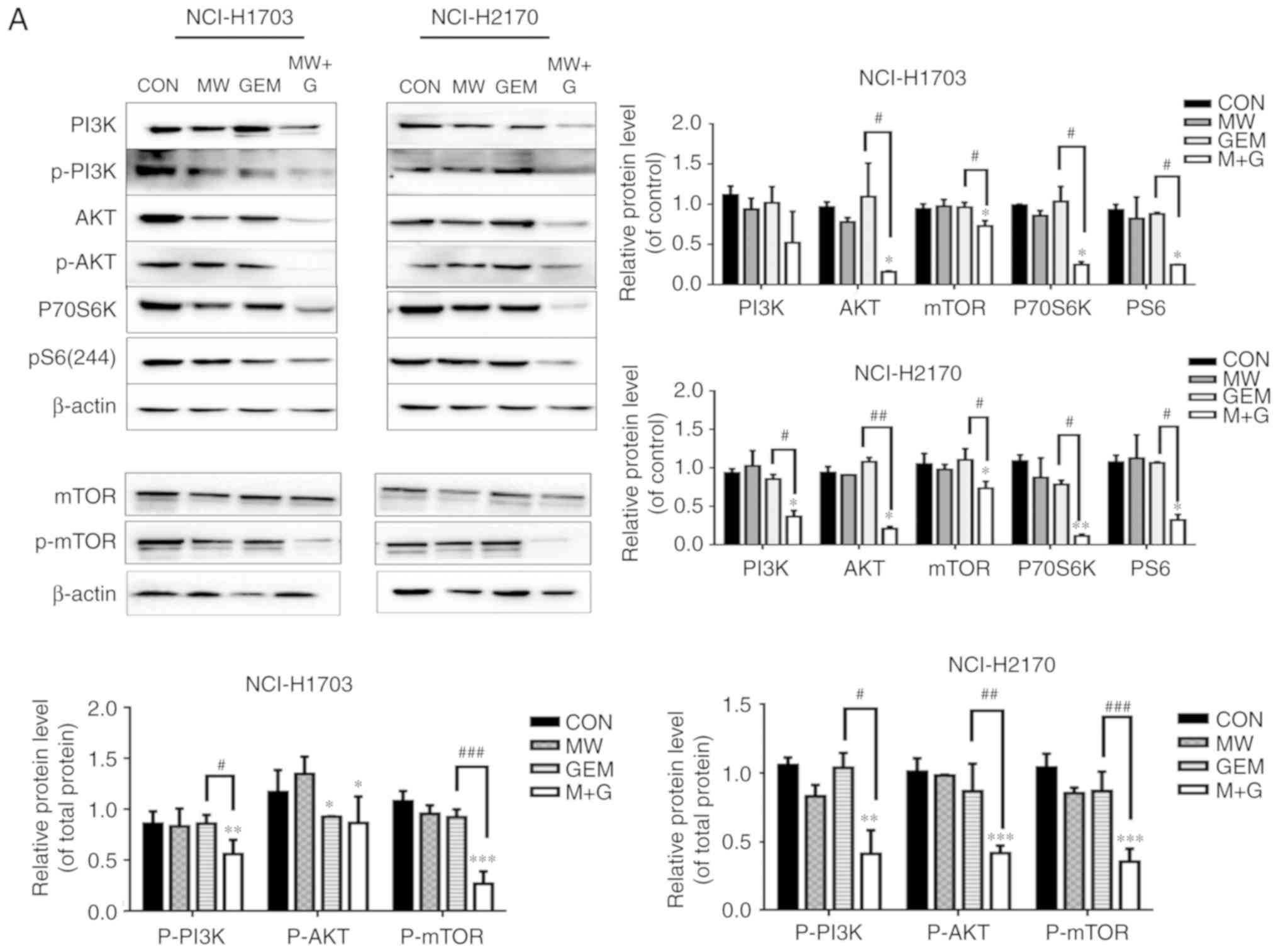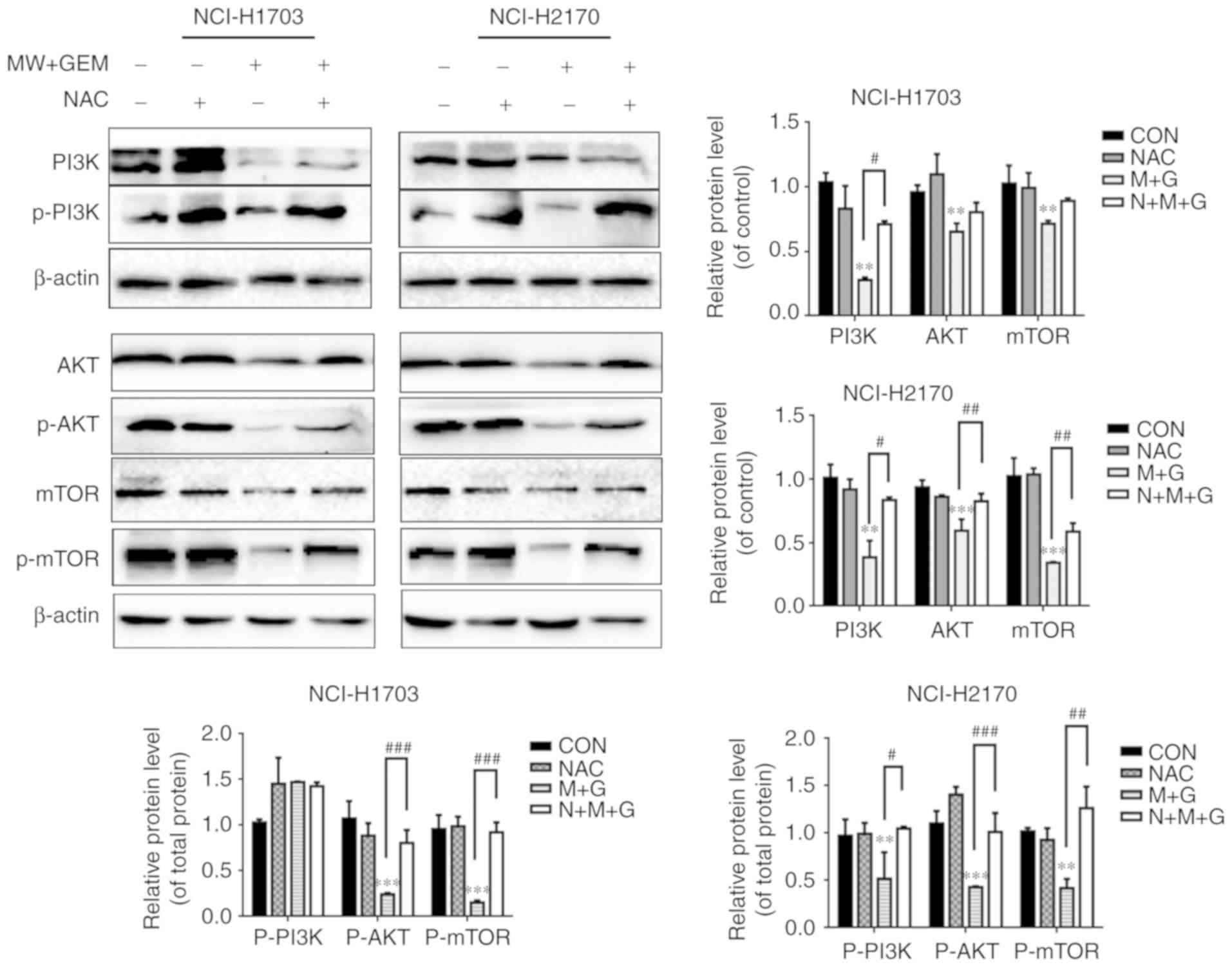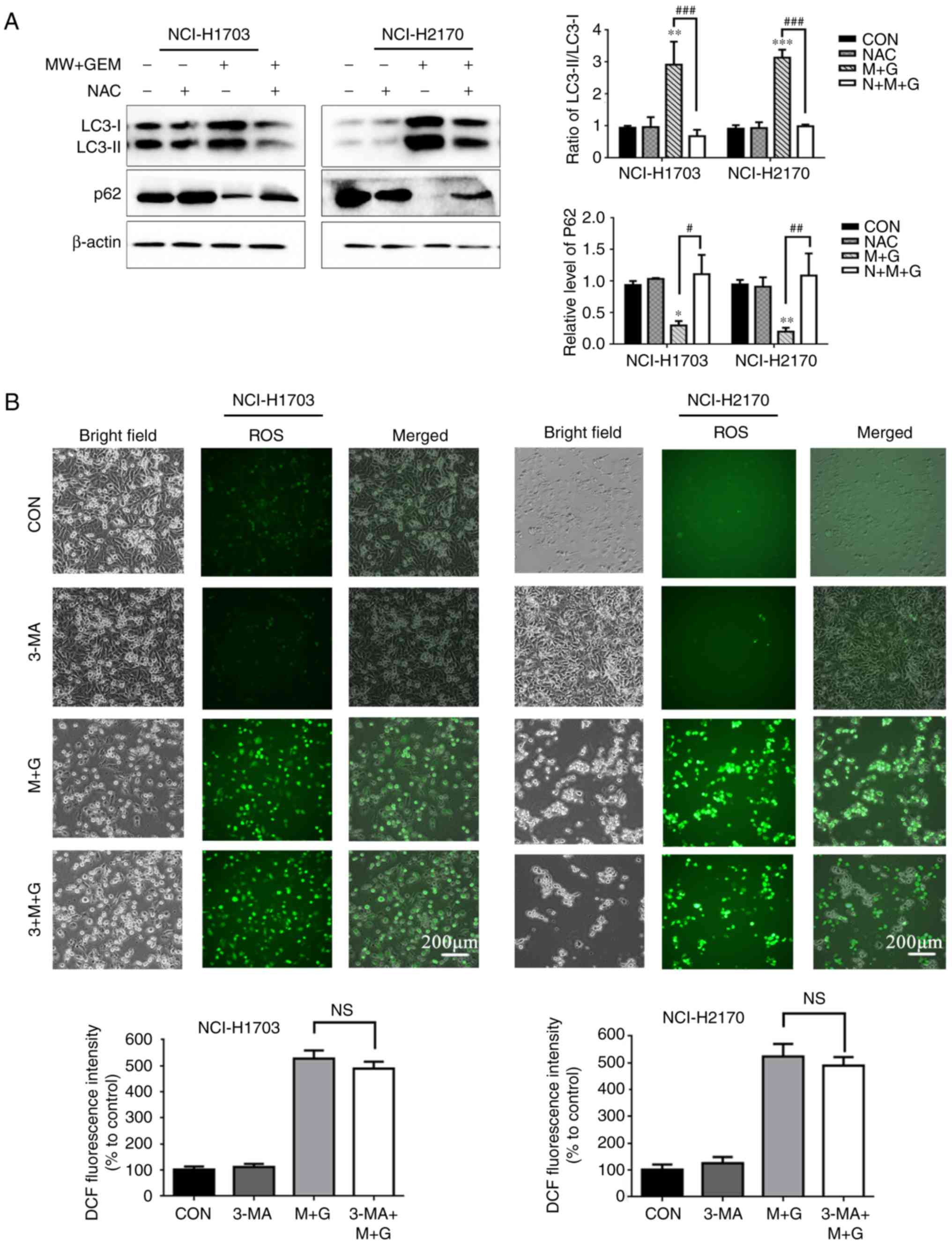|
1
|
Siegel RL, Miller KD and Jemal A: Cancer
statistics, 2015. CA Cancer J Clin. 65:5–29. 2015. View Article : Google Scholar : PubMed/NCBI
|
|
2
|
Heist RS, Mino-Kenudson M, Sequist LV,
Tammireddy S, Morrissey L, Christiani DC, Engelman JA and Iafrate
AJ: FGFR1 amplification in squamous cell carcinoma of the lung. J
Thorac Oncol. 7:1775–1780. 2012. View Article : Google Scholar : PubMed/NCBI
|
|
3
|
Derman BA, Mileham KF, Bonomi PD, Batus M
and Fidler MJ: Treatment of advanced squamous cell carcinoma of the
lung: A review. Transl Lung Cancer Res. 4:524–532. 2015.PubMed/NCBI
|
|
4
|
Sun Y, Wu YL, Zhou CC, Zhang L, Zhang L,
Liu XY, Yu SY, Jiang GL, Li K, Qin SK, et al: Second-line
pemetrexed versus docetaxel in Chinese patients with locally
advanced or metastatic non-small cell lung cancer: A randomized,
open-label study. Lung Cancer. 79:143–150. 2013. View Article : Google Scholar : PubMed/NCBI
|
|
5
|
Palumbo R, Sottotetti F, Trifirò G, Piazza
E, Ferzi A, Gambaro A, Spinapolice EG, Pozzi E, Tagliaferri B,
Teragni C, et al: Nanoparticle albumin-bound paclitaxel
(nab-paclitaxel) as second-line chemotherapy in HER2-negative,
taxane-pretreated metastatic breast cancer patients: Prospective
evaluation of activity, safety, and quality of life. Drug Des Devel
Ther. 9:2189–2199. 2015. View Article : Google Scholar : PubMed/NCBI
|
|
6
|
Duan J, Wang Z, Bai H, An T, Zhuo M, Wu M,
Wang Y, Yang L and Wang J: Epidermal growth factor receptor variant
III mutation in Chinese patients with squamous cell cancer of the
lung. Thorac Cancer. 6:319–326. 2015. View Article : Google Scholar : PubMed/NCBI
|
|
7
|
Hurwitz M and Stauffer P: Hyperthermia,
radiation and chemotherapy: The role of heat in multidisciplinary
cancer care. Semin Oncol. 41:714–729. 2014. View Article : Google Scholar : PubMed/NCBI
|
|
8
|
Salahi S, Maccarini PF, Rodrigues DB,
Etienne W, Landon CD, Inman BA, Dewhirst MW and Stauffer PR:
Miniature microwave applicator for murine bladder hyperthermia
studies. Int J Hyperthermia. 28:456–465. 2012. View Article : Google Scholar : PubMed/NCBI
|
|
9
|
Asano M, Tanaka S, Sakaguchi M, Matsumura
H, Yamaguchi T, Fujita Y and Tabuse K: Normothermic microwave
irradiation induces death of HL-60 cells through Heat-independent
apoptosis. Sci Rep. 7:114062017. View Article : Google Scholar : PubMed/NCBI
|
|
10
|
Li C, Li C, Ge H, Liang M, Ma G, Ling L,
Pan H, Gong H, Xie H, Ding Q, et al: Technical analysis of US
imaging for precise microwave ablation for benign breast tumours.
Int J Hyperthermia. 34:1179–1185. 2018. View Article : Google Scholar : PubMed/NCBI
|
|
11
|
Han JB, Kong FW, Ding H, Zhang YF, Liu JM,
Wei Q, Hu L, Zhao L, Xu CJ and Yi YX: Hepatectomy combined with
microwave ablation of the spleen for treatment of hepatocellular
carcinoma complicated with splenomegaly: A retrospective study. Mol
Clin Oncol. 6:204–208. 2017. View Article : Google Scholar : PubMed/NCBI
|
|
12
|
Kouloulias V, Triantopoulou S, Vrouvas J,
Gennatas K, Oozounoglou N, Kouvaris J, Karaiskos P, Aggelakis P,
Antypas C, Zygogianni A, et al: Combined chemoradiotherapy with
local microwave hyperthermia for treatment of T3N0 laryngeal
carcinoma: A retrospective study with long-term follow-up. Acta
Otorhinolaryngol Ital. 34:167–173. 2014.PubMed/NCBI
|
|
13
|
Othman T, Goto S, Lee JB, Taimura A,
Matsumoto T and Kosaka M: Hyperthermic enhancement of the apoptotic
and antiproliferative activities of paclitaxel. Pharmacology.
62:208–212. 2001. View Article : Google Scholar : PubMed/NCBI
|
|
14
|
Adachi S, Kokura S, Okayama T, Ishikawa T,
Takagi T, Handa O, Naito Y and Yoshikawa T: Effect of hyperthermia
combined with gemcitabine on apoptotic cell death in cultured human
pancreatic cancer cell lines. Int J Hyperthermia. 25:210–219. 2009.
View Article : Google Scholar : PubMed/NCBI
|
|
15
|
Zhao YY, Wu Q, Wu ZB, Zhang JJ, Zhu LC,
Yang Y, Ma SL and Zhang SR: Microwave hyperthermia promotes
caspase-3-dependent apoptosis and induces G2/M
checkpoint arrest via the ATM pathway in non-small cell lung cancer
cells. Int J Oncol. 53:539–550. 2018.PubMed/NCBI
|
|
16
|
Yang Y, Zhao Y, Ma S and Yang D: Microwave
hyperthermia combined with gemcitabine inhibits proliferation and
induces apoptosis of human lung squamous carcinoma cells. Zhongguo
Fei Ai Za Zhi. 21:805–814. 2018.(In Chinese). PubMed/NCBI
|
|
17
|
White EJ, Martin V, Liu JL, Klein SR, Piya
S, Gomez-Manzano C, Fueyo J and Jiang H: Autophagy regulation in
cancer development and therapy. Am J Cancer Res. 1:362–372.
2011.PubMed/NCBI
|
|
18
|
Rosenfeldt MT and Ryan KM: The multiple
roles of autophagy in cancer. Carcinogenesis. 32:955–963. 2011.
View Article : Google Scholar : PubMed/NCBI
|
|
19
|
Wang H, Zhang T, Sun W, Wang Z, Zuo D,
Zhou Z, Li S, Xu J, Yin F, Hua Y, et al: Erianin induces G2/M-phase
arrest, apoptosis, and autophagy via the ROS/JNK signaling pathway
in human osteosarcoma cells in vitro and in vivo. Cell Death Dis.
7:e22472016. View Article : Google Scholar : PubMed/NCBI
|
|
20
|
Ba MC, Long H, Wang S, Wu YB, Zhang BH,
Yan ZF, Yu FH and Cui SZ: Hyperthermia enhances radiosensitivity of
colorectal cancer cells through ROS inducing autophagic cell death.
J Cell Biochem. 119:3763–3774. 2018. View Article : Google Scholar : PubMed/NCBI
|
|
21
|
Chen F, Wang CC, Kim E and Harrison LE:
Hyperthermia in combination with oxidative stress induces
autophagic cell death in HT-29 colon cancer cells. Cell Biol Int.
32:715–723. 2008. View Article : Google Scholar : PubMed/NCBI
|
|
22
|
Wang Z, Cai F, Chen X, Luo M, Hu L and Lu
Y: The role of mitochondria-derived reactive oxygen species in
hyperthermia-induced platelet apoptosis. PLoS One. 8:e750442013.
View Article : Google Scholar : PubMed/NCBI
|
|
23
|
Hou CH, Lin FL, Hou SM and Liu JF:
Hyperthermia induces apoptosis through endoplasmic reticulum and
reactive oxygen species in human osteosarcoma cells. Int J Mol Sci.
15:17380–17395. 2014. View Article : Google Scholar : PubMed/NCBI
|
|
24
|
Klionsky DJ, Abdalla FC, Abeliovich H,
Abraham RT, Acevedo-Arozena A, Adeli K, Agholme L, Agnello M,
Agostinis P, Aguirre-Ghiso JA, et al: Guidelines for the use and
interpretation of assays for monitoring autophagy. Autophagy.
8:445–544. 2012. View Article : Google Scholar : PubMed/NCBI
|
|
25
|
Martinotti S, Ranzato E, Parodi M, Vitale
M and Burlando B: Combination of
ascorbate/epigallocatechin-3-gallate/gemcitabine synergistically
induces cell cycle deregulation and apoptosis in mesothelioma
cells. Toxicol Appl Pharmacol. 274:35–41. 2014. View Article : Google Scholar : PubMed/NCBI
|
|
26
|
Furusawa Y, Iizumi T, Fujiwara Y, Zhao QL,
Tabuchi Y, Nomura T and Kondo T: Inhibition of checkpoint kinase 1
abrogates G2/M checkpoint activation and promotes apoptosis under
heat stress. Apoptosis. 17:102–112. 2012. View Article : Google Scholar : PubMed/NCBI
|
|
27
|
Michalakis J, Georgatos SD, Romanos J,
Koutala H, Georgoulias V, Tsiftsis D and Theodoropoulos PA:
Micromolar taxol, with or without hyperthermia induces mitotic
catastrophe and cell necrosis in HeLa cells. Cancer Chemother
Pharmacol. 56:615–622. 2005. View Article : Google Scholar : PubMed/NCBI
|
|
28
|
Haveman J, Rietbroek RC, Geerdink A, Van
Rijn J and Bakker PJ: Effect of hyperthermia on the cytotoxicity of
2′,2′-difluorodeoxycytidine (gemcitabine) in cultured SW1573 cells.
Int J Cancer. 62:627–630. 1995. View Article : Google Scholar : PubMed/NCBI
|
|
29
|
Ba MC, Long H, Cui SZ, Gong YF, Yan ZF,
Wang S and Wu YB: Mild hyperthermia enhances sensitivity of gastric
cancer cells to chemotherapy through reactive oxygen
species-induced autophagic death. Tumor Biol.
39:10104283177119522017. View Article : Google Scholar
|
|
30
|
Zhang L, Wang H, Xu J, Zhu J and Ding K:
Inhibition of cathepsin S induces autophagy and apoptosis in human
glioblastoma cell lines through ROS-mediated PI3K/AKT/mTOR/p70S6K
and JNK signaling pathways. Toxico Lett. 228:248–259. 2014.
View Article : Google Scholar
|
|
31
|
Dewaele M, Maes H and Agostinis P:
ROS-mediated mechanisms of autophagy stimulation and their
relevance in cancer therapy. Autophagy. 6:838–854. 2010. View Article : Google Scholar : PubMed/NCBI
|
|
32
|
Xiong Y, Yepuri G, Forbiteh M, Yu Y,
Montani JP, Yang Z and Ming XF: ARG2 impairs endothelial autophagy
through regulation of MTOR and PRKAA/AMPK signaling in advanced
atherosclerosis. Autophagy. 10:2223–2238. 2014. View Article : Google Scholar : PubMed/NCBI
|
|
33
|
Zhang Q, Zhu H, Xu X, Li L, Tan H and Cai
X: Inactivated Sendai virus induces apoptosis and autophagy via the
PI3K/Akt/mTOR/p70S6K pathway in human nonsmall cell lung cancer
cells. Biochem Biophys Res Commun. 465:64–70. 2015. View Article : Google Scholar : PubMed/NCBI
|
|
34
|
Papadimitrakopoulou V: Development of
PI3K/AKT/mTOR pathway inhibitors and their application in
personalized therapy for non-small-cell lung cancer. J Thorac
Oncol. 7:1315–1326. 2012. View Article : Google Scholar : PubMed/NCBI
|
|
35
|
Zhou M, Shen S, Zhao X and Gong X:
Luteoloside induces G0/G1 arrest and pro-death autophagy through
the ROS-mediated AKT/mTOR/p70S6K signalling pathway in human
non-small cell lung cancer cell lines. Biochem Biophys Res Commun.
494:263–269. 2017. View Article : Google Scholar : PubMed/NCBI
|















